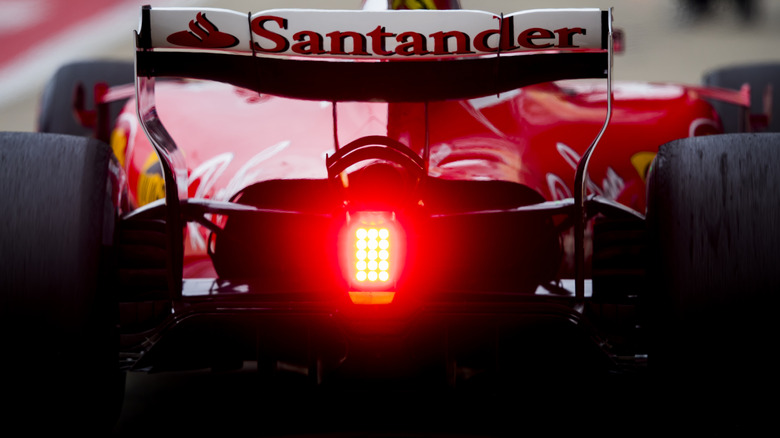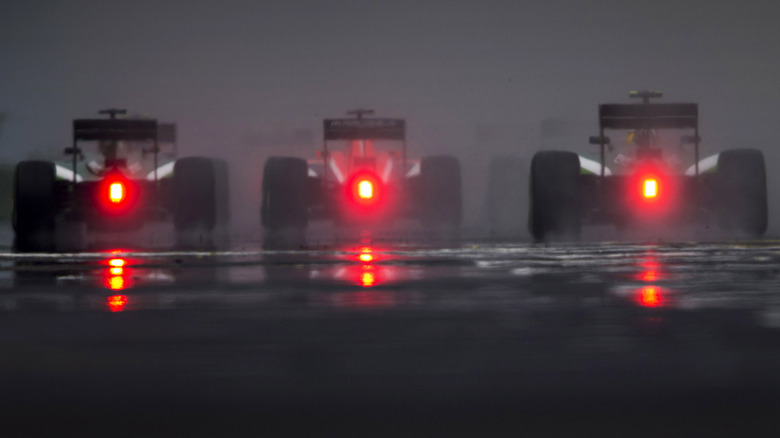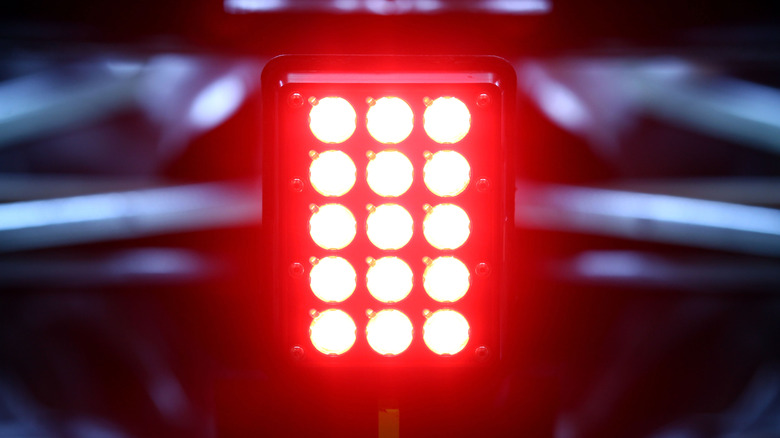Usually seen blinking away during a wet race or when a Formula 1 car is crawling through the pit lane is a tiny, pulsing red LED seems like it’s got something urgent to say. It’s easy to overlook if you’re locked onto a high-speed duel down the main straight, but that light isn’t there for aesthetics. It’s pulling double duty as one of the sport’s smallest but most crucial safety features.
Mandated by the Fédération Internationale de l’Automobile (FIA) — because no detail is too small for the Formula 1 rule overlords — this flashing red light is all about visibility. When the rain turns the track into a rooster-tail-filled wall of mist, the bright LED light cuts through the chaos to help trailing drivers spot the car ahead.
However, it’s not just a bad-weather buddy. In today’s hybrid-era machines, it also kicks in when the car is harvesting energy through the Energy Recovery System (ERS). That means less punch under acceleration or during corner exits, so the car behind gets a warning before diving in too hot. In short, that bright blinking flash of light is a trailing driver’s early warning system for what the car ahead is about to do — or not do — next.
It’s not just about the rain anymore
What that blinking red LED definitely is not is a brake light, as F1 doesn’t use those at all. This little red light first appeared decades ago as a rainy-day safety feature, but ever since 2014 it has served a double duty functionality that is arguably just as important.
When an F1 car is harvesting energy with its ERS — particularly through the Motor Generator Unit-Kinetic (MGU-K) — it begins pulling kinetic energy from the brakes and converting it to electrical energy to charge the battery. When this process starts, the red light flashes to warn anyone behind that things might slow down unexpectedly. In a world where grip is everything and reaction times are measured in milliseconds, that flash might save someone’s nose cone and prevent a DNF.
Think of this light as an indicator that the car flashing it is slower than usual. As such, you’ll most frequently see it active during qualifying, practice, formation or cool-down laps, in the pit lane, and during safety car periods. In very rare cases, you’ll see it switch from red to green. That signals that a rookie is behind the wheel, specifically someone without a full FIA Super License just yet. Think of it as a learner’s badge — except it’s mounted on a multimillion-dollar carbon-fiber rocket that’s capable of pulling 5 Gs through a corner.
Rules, placement, and visibility tech
FIA rules don’t mess around when it comes to that blinking red light. Every F1 car has to have one, and it can’t just be slapped on wherever a team feels like. It needs to be mounted exactly 300 millimeters above the reference plane, give or take 5 millimeters, and aimed straight back at 90 degrees. This usually positions it just above the diffuser and under the rear wing.
Today, F1 cars also have extra flashing lights on the wing endplates too, all of which are synced up with the main one. Why? In a wall of tire spray or when a car’s in energy harvest mode, even a tiny flash of the red light can help facilitate a clean pass, keeping everyone out of each other’s carbon fiber bits. The FIA is constantly fine-tuning these regulations to keep things safe without slowing anyone down. It might be small, but that red flicker’s pulling some serious weight.
So the next time you spot that strobing red dot at the back of an F1 car, you’ll know it’s not just for show. Sure, it may not be as sophisticated as the $100,000 steering wheel of an F1 car, but it’s as much of a critical piece of race-day tech doing a whole lot of work in a tiny package.




